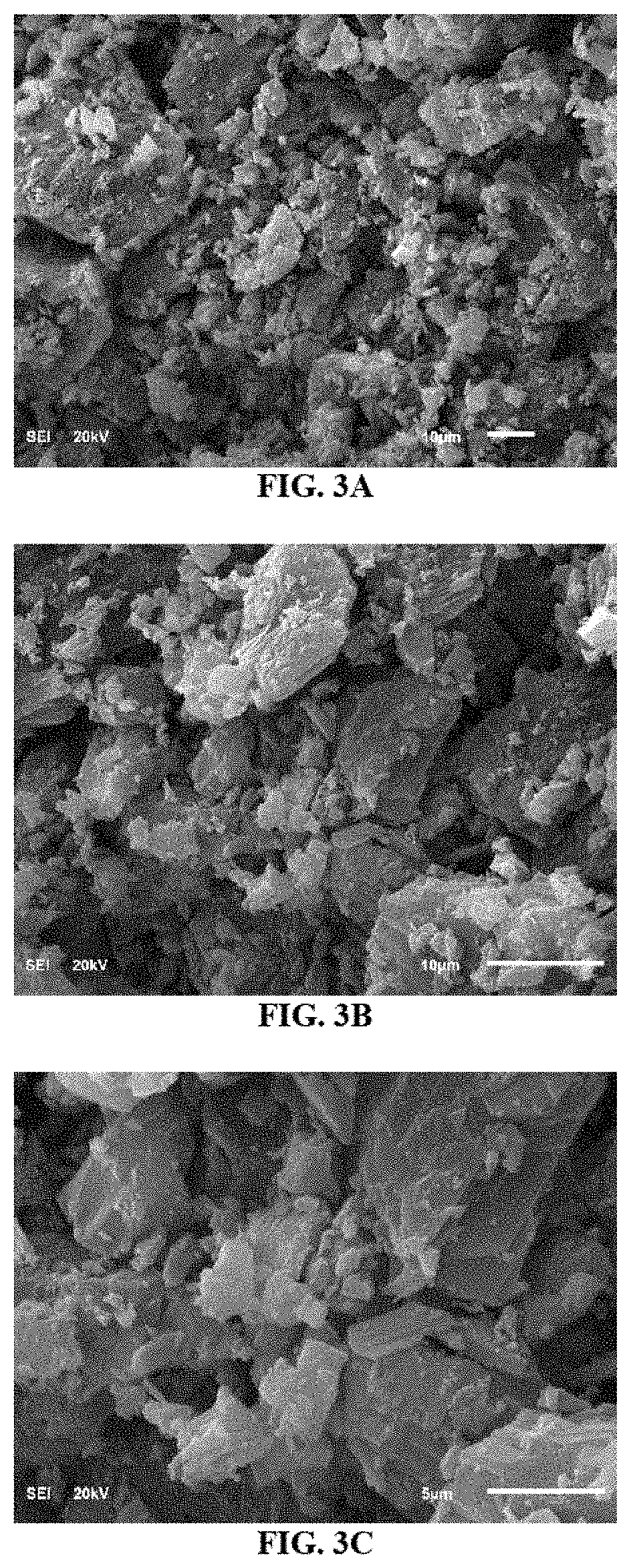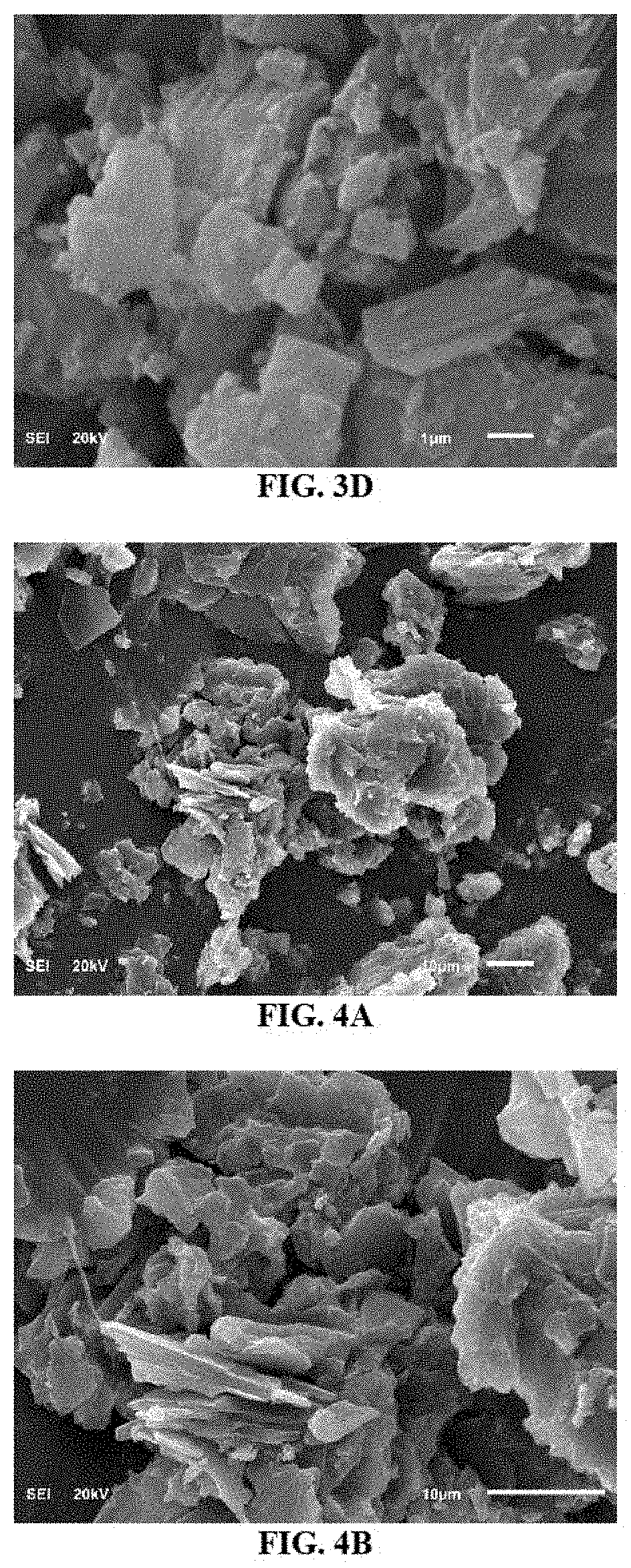Hydrocracking processes using a metal-calixarene based catalyst
a metalcalixarene and catalyst technology, applied in the direction of hydrocarbon oil cracking, hydrocarbon oil treatment, organic compound/hydride/coordination complex catalyst, etc., can solve the problems of equipment fouling, production loss, and agglomeration becoming a major drawback
- Summary
- Abstract
- Description
- Claims
- Application Information
AI Technical Summary
Benefits of technology
Problems solved by technology
Method used
Image
Examples
example 1
Materials
[0119]All chemicals used were of analytical grade and used as received without further purification. For synthesizing the metal-based calixarene, 4-tert-butylcalix[4]arene (C44H56O4, ≥99.0%), cobalt(II) nitrate hexahydrate (Co(NO3)2.6H2O, reagent grade, ≥98.0%), nickel(II) nitrate hexahydrate (Ni(NO3)2.6H2O, 99.999% trace metals basis), N,N-dimethylformamide (HCON(CH3)2, anhydrous, 99.8%), dimethyl sulfoxide ((CH3)2SO, reagent grade, 99.5%), triethylamine ((C2H5)3N, ≥99.5%), and methanol (CH3OH anhydrous, 99.8%) were obtained from Sigma-Aldrich, USA. Nickel(II) 2-ethylhexanoate (78% in 2-Ethylhexanoic acid, 10-15% Ni) and cobalt(II) 2-ethylhexanoate (65 wt % in mineral spirits 12 wt % Co) were also received from Sigma-Aldrich, USA. They were implemented as oil-soluble dispersed organometallic catalyst precursors for the sake of comparing their catalytic behaviors with the synthesized metal-based calixarenes.
[0120]The feedstock for the hydrocracking process is vacuum gas oil...
example 2
Synthesis of Metal-Based p-tert-butylcalix[4]arene
[0123]The dispersed catalysts were nickel-p-tert-butylcalix[4]arene and cobalt-p-tert-butylcalix[4]arene. Theses complexes were synthesized based on the parent host which is p-tert-butylcalix[4]arene, hereafter referred to as TBC[4]. The metal precursors for the Ni and Co were nickel(II) nitrate hexahydrate, and cobalt(II) nitrate hexahydrate, respectively. The host calixarene structure was prepared by adding 100 mg of TBC[4] to 10 mL dimethylformamide (DMF) and then heating to 60° C. on stirrer. The mixture was kept on stirrer until it turned to be a colloidal solution. After that, 0.6 mL of triethylamine was added to the mixture drop wise until the mixture turned clear. For preparing the metal precursors of nickel and cobalt, cobalt(II) nitrate hexahydrate and nickel(II) nitrate hexahydrate were used. A mixture of 10 mL of methanol and 1.5 mL of dimethyl sulfoxide (DMSO) was added drop wise to 2 g of each precursor. The metal precu...
example 3
Evaluation in the Autoclave Batch Reactor
[0125]The use of an autoclave batch reactor is favorable for scientific researches because it could provide information about the conversion and selectively of the reaction as well as the catalyst's activity and stability. The autoclave batch reactor is also widely used to get different experimental results at various residence times and temperatures that could be modeled to get kinetic parameters such as activation energy and intrinsic rate constant. The reactor used in this study was received from Parker Autoclave Engineers, USA.
[0126]The reactor size was 300 mL and was fitted manually with an agitator that was controlled by a motor. The reactor was housed in a heating jacket that provided the required heat by electrical mean. The reactor was fitted with a pressure gauge and two thermocouples to read the temperature of the heating jacket as well as the reactants' mixture inside the reactor. The reactor was also fitted with a gas supply from...
PUM
| Property | Measurement | Unit |
|---|---|---|
| Temperature | aaaaa | aaaaa |
| Fraction | aaaaa | aaaaa |
| Time | aaaaa | aaaaa |
Abstract
Description
Claims
Application Information
 Login to View More
Login to View More - R&D
- Intellectual Property
- Life Sciences
- Materials
- Tech Scout
- Unparalleled Data Quality
- Higher Quality Content
- 60% Fewer Hallucinations
Browse by: Latest US Patents, China's latest patents, Technical Efficacy Thesaurus, Application Domain, Technology Topic, Popular Technical Reports.
© 2025 PatSnap. All rights reserved.Legal|Privacy policy|Modern Slavery Act Transparency Statement|Sitemap|About US| Contact US: help@patsnap.com



